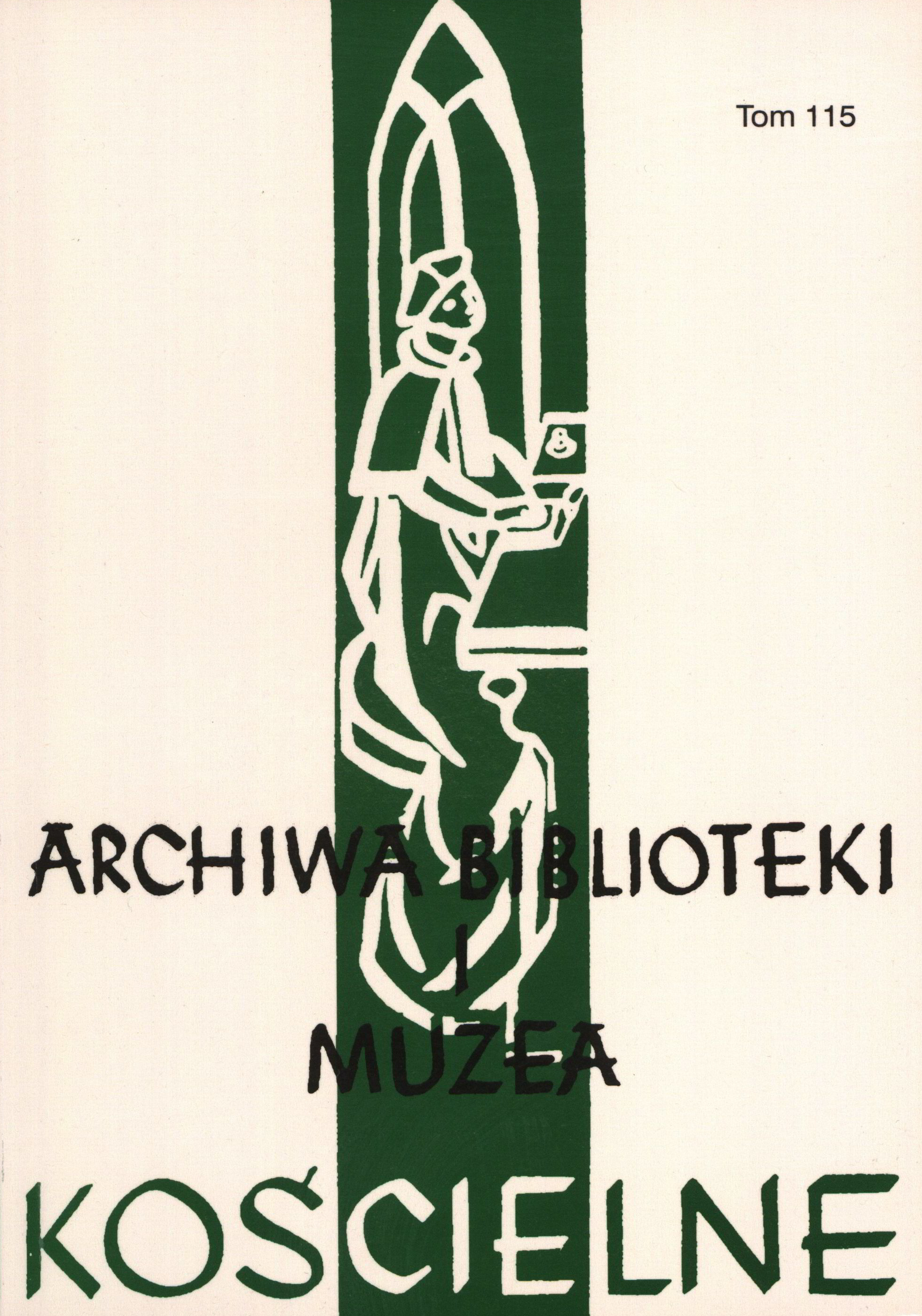„Najczystsze Zwierciadło Czystości” w klasztorze Benedyktynek w Staniątkach
“The Purest Mirror of Purity” (“Najczystsze Zwierciadło Czystości”) in the Benedictine monastery in Staniątki
Author(s): Katarzyna PonińskaSubject(s): History
Published by: Katolicki Uniwersytet Lubelski Jana Pawła II - Wydział Teologii
Keywords: Holy Family; St. Benedict; St. Scholastica; Staniątki; Benedictine nuns; religious vows; Paolo Piazza; Raphael Sadeler the Younger
Summary/Abstract: In the collection of the Benedictine monastery in Staniątki there is a painting showing the founders of the order adoring the Mother of God with the Child and St. Joseph against the background of a garden with a fountain and buildings. This, seemingly generic and easy to define subject of the portrayal, which can be found recorded in the archival records kept in the convent, has been duplicated by many researchers. It turns out, however, that the figures of Saints Benedict and St. Scholastica, painted in this specific context, may hide deeper content. This may be indicated by the pointing to a graphic pattern that exactly corresponds to the arrangement of the painted version. It is about one of the engravings belonging to the series of copperplate engravings made by Raphael Sadeler the Younger, based on the compositions of Capuchin Paolo Piazza. Under the figures of representatives of the most important orders (Franciscans, Benedictines and Dominicans) accompanying the events of the Savior's life, he tried to illustrate three basic religious vows: poverty, chastity and obedience, which are an obligation to fulfil the evangelical counsels. The painting kept in the monastery in Staniątki corresponds visually to the illustration of the virtue of chastity. The lack of other paintings modelled on the graphic series does not mean that the described representation could not be the carrier of the content indicated in the article. At the same time, it is also impossible to be certain that its meaning was understood in this way. A comparison with the implicit graphic pattern allows not only to indicate the formal source of the composition. It is also a starting point for explaining the theological foundations of the work functioning within the walls of the monastery.
Journal: Archiwa, Biblioteki i Muzea Kościelne
- Issue Year: 2021
- Issue No: 115
- Page Range: 323-336
- Page Count: 13
- Language: Polish

